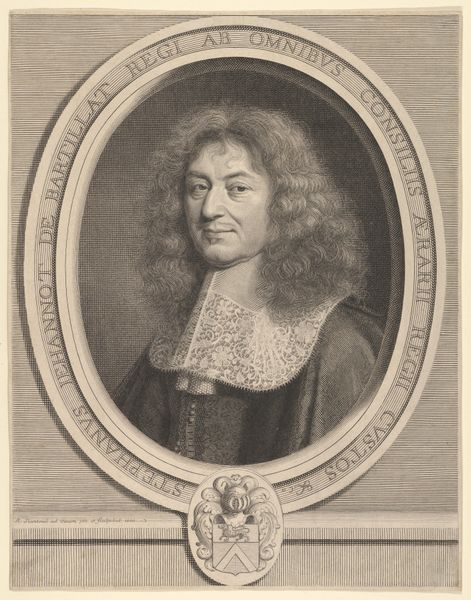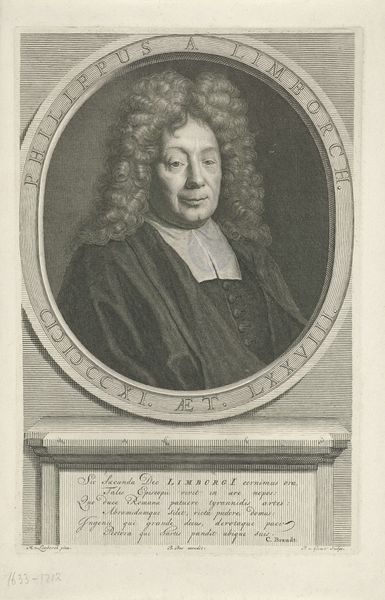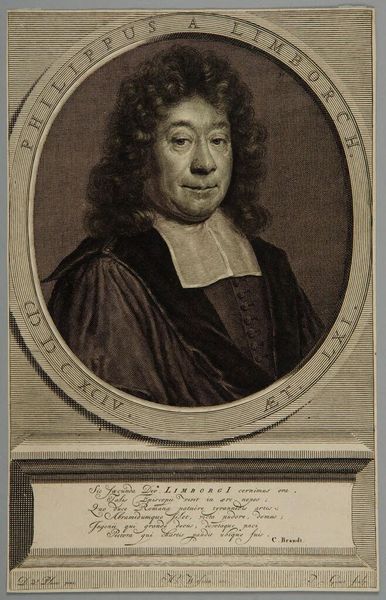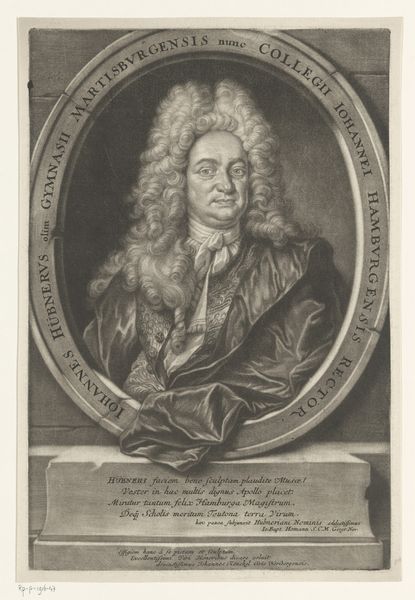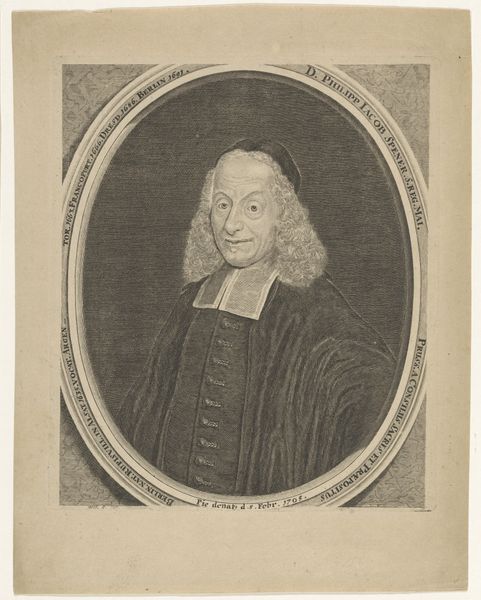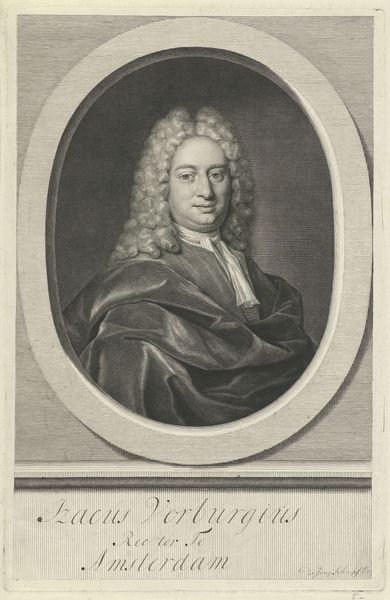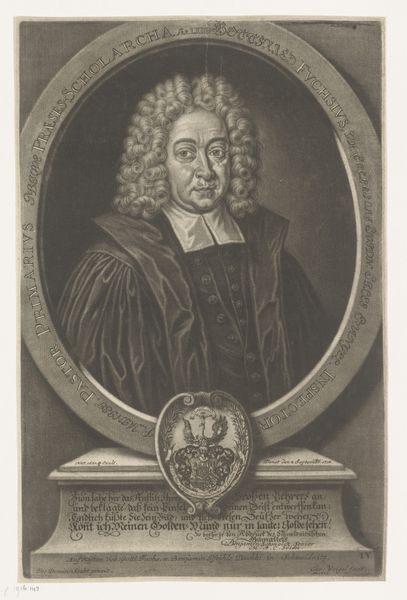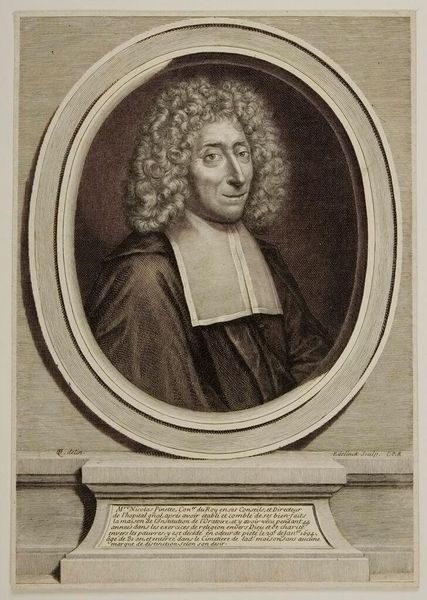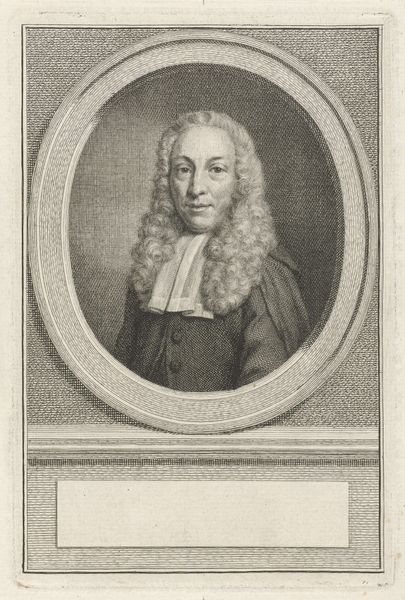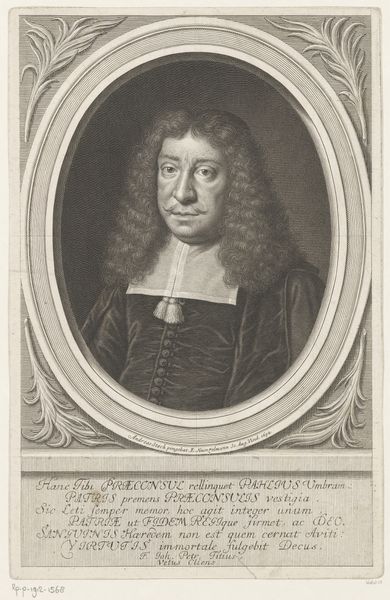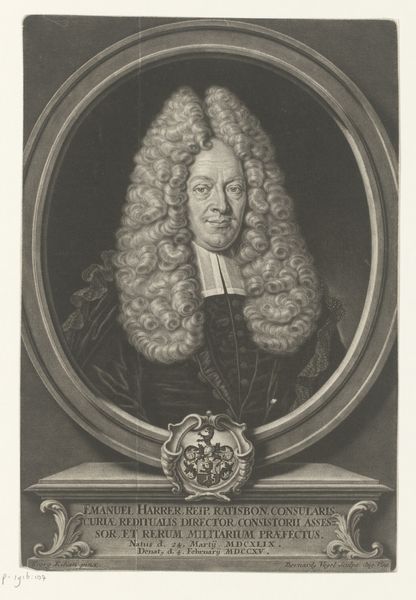
drawing, print, engraving
#
portrait
#
drawing
#
baroque
# print
#
history-painting
#
engraving
Dimensions: Sheet: 19 15/16 × 16 15/16 in. (50.7 × 43 cm)
Copyright: Public Domain
Curator: Standing before us is Gérrard Edelinck’s engraving, "Etienne Dalligre, Chancelier de France," dating between 1655 and 1707. What's your initial reaction? Editor: There’s a starkness to it. The tight oval framing the Chancellor emphasizes his somewhat weary expression. The textures, despite the monochromatic palette, create depth, but the subject exudes a somber air, almost burdened by the trappings of power. Curator: The piece showcases Edelinck’s mastery of engraving. Note the delicate lines rendering Dalligre’s voluminous wig and the contrasting textures of his robes. Observe how light and shadow play across his face, meticulously crafted to convey not just likeness but also, arguably, status. The meticulous use of line dictates how our eye deciphers form. Editor: But isn’t it interesting how even in such a formally staged portrait, a narrative of power dynamics surfaces? Dalligre, Chancellor of France, is undoubtedly presented as a figure of authority, but I see it subtly complicated. The weight of his office seems almost palpable, hinting at the complex socio-political context he navigated, in Louis XIV’s court, amidst the growing discontent in the late 17th century. Curator: While your interpretation of 'burden' is valid, remember how Baroque portraiture served the important function of promoting the subject, reinforcing his social standing through established visual cues: dignified pose, sumptuous fabrics, the accoutrements of office – and Edelinck captures that masterfully. It serves to establish lineage and authority through symbolism embedded in texture and form. Editor: Absolutely, the strategic rendering and symbolism play that part. However, stripping away those semiotic symbols only leaves an isolated person. Dalligre exists as a high member of the French Court, complicit in a structure of power that directly affected the lives of his contemporary subjects. Curator: A worthwhile discussion. Considering the precision in Edelinck's engraving and his use of established methods for political imagery gives you something to think about. Editor: Right! And recognizing the historical moment it reflects prompts a wider conversation about how power is constructed and represented, in a visual image.
Comments
No comments
Be the first to comment and join the conversation on the ultimate creative platform.
